Saying Goodbye
Story by Jennifer Gauntt, CVMBS Communications
As Dean Eleanor M. Green prepares for her next big move, she reflects on what brought her to Texas A&M, bringing her vision for the college to life, and the things and people who have made her experience so special.
A conversation with Dean Eleanor M. Green on:
- What brought her to Texas A&M
- How she has met her initial goals
- Her top accomplishments
- The most rewarding aspects of being dean
- How her past roles influenced her time as dean
- The hardest part of the job
- The highlight of her time as dean
- Her favorite “lighter moments”
- Why she stayed involved in the veterinary community
- What she looks forward to in her next endeavor
- What she will miss most
- What she hopes people will remember about her time as dean
- Her advice for the next dean
- How she hopes the CVM will build upon her legacy
- Her final thoughts
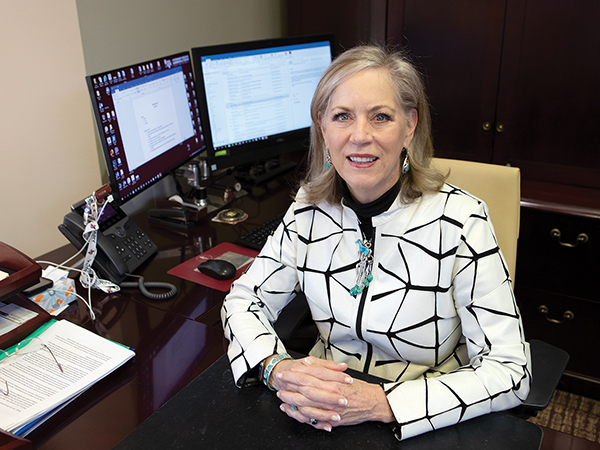
What were your thoughts when you were offered the dean’s position at Texas A&M?
I had gone back to the University of Florida 14 years previously with the intent of finishing my career in my home state at my alma mater. When Texas A&M called, I was reluctant to apply at first; however, I had visited former Dean John Shadduck at Texas A&M once before. He took us to a football game, where we stood for the entire game.
I decided to research Texas A&M further to help make my decision, and my explorations confirmed that Texas A&M was a large, comprehensive, tier-one research institution with immense capabilities. Its College of Veterinary Medicine & Biomedical Sciences (CVM) was clearly a crown jewel of campus, one that also boasted a strong undergraduate program. I was intrigued by the Texas A&M core values and its many traditions. The vastness of Texas, its large urban centers, the livestock industry, its historic ranches, the Texas A&M University system, and the proximity of the Texas Medical Center in Houston all contributed to a fertile environment for veterinary medicine and veterinary medical education. I simply could not pass up this invitation.
During my on-campus interview, it took very little time to recognize the uniqueness and appeal of Texas A&M and its CVM. Within half a day, I was committed. The formal offer came by phone when I was in Liverpool, England, attending the British Equine Veterinary Association meeting as president of the American Association of Equine Practitioners (AAEP).
That was it; I was coming to Texas. My canine sidekick, Cohen, and I packed up and moved, leaving the horses behind until I could find accommodations for them.
Among your initial goals as dean were prioritizing research, assuring educational excellence at all levels, creating the veterinary medical teaching hospital of the future, and addressing the changing world of veterinary medicine. What strides do you think the college has made in those arenas under your tenure?
All strides were made with much help from others. Many within and beyond the CVM have contributed substantially to each and every accomplishment, as they continue to do. No progress could have been made without hardworking, dedicated, talented faculty, staff, and students, as well as external supporters. I would put the CVM faculty, staff, students, and supporters up against all others. People make programs.
Texas A&M, similar to every other university, has missions that include transformative teaching and learning, discovery and innovation, and outreach and engagement. For the CVM, world-class, compassionate patient care is foundational.
In the research arena, veterinary colleges are uniquely positioned to advance animal, human, and environmental health. This offers a breadth of research opportunities along a continuum, from basic discovery to translational research to commercialization. Research funding appropriately includes the National Institutes of Health (NIH) and other federal sources, foundations, industry, philanthropy, entrepreneurship, and other creative means.
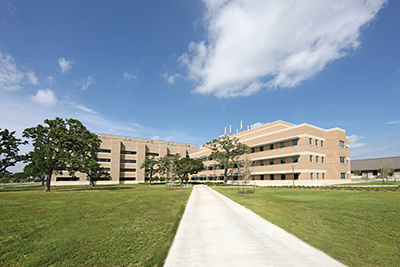
With the decided goal of advancing the CVM research agenda, my first action was to prioritize research by limiting my start-up requests to CVM research support. I was able to obtain campus funds to complete the Veterinary Research Building (VRB), which was under construction at the time, and to provide the money to finish out all of the laboratories, rather than require the principal investigators to use their own monies, as had been planned.
Since then, we have further bolstered research by taking advantage of opportunities as they arise, such as the President’s Senior Hires, the Chancellors Research Initiative (CRI), the Governor’s University Research Initiative (GURI), the Hagler Institute for Advanced Study, the Provost’s excellence initiatives, targeted hiring, start-up funds, adding designated research support staff, and much more. Dr. Bob Burghardt and his team have been highly successful in supporting research and graduate studies. The existing research signature programs were revisited, resulting in the identification of research focus areas and the development of tangible criteria for areas of research distinction, all under the umbrella of translational research.
Toxicology, oncology, and environmental health sciences fulfilled the criteria for distinction, with the Texas A&M Superfund Research Center reaching great heights. Graduate education support was completely revamped, consolidating degrees, aligning with research focus areas, centralizing admission, offering a rigorous week-long orientation and an oath ceremony, actively recruiting, creating a core facilities experiential learning program, and providing professional development opportunities.
Over the past decade, research expenditures have tripled, the CVM graduate program has been cited as a model on campus, research has incited great impacts, and the contributing faculty and graduate students have received many well-deserved awards and recognitions.
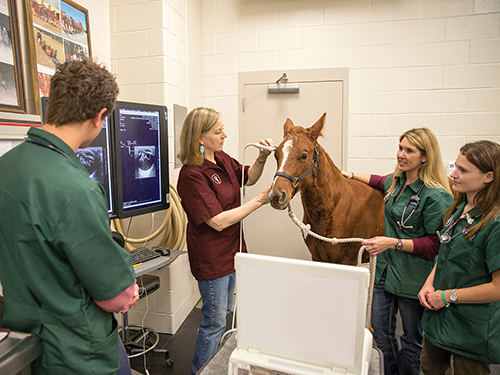
The Doctor of Veterinary Medicine (DVM) program is an enormous success. With Dr. Kenita Rogers followed by Dr. Karen Cornell at the helm, the Professional Programs Office (PPO) has built a team of education specialists to foster educational technologies, advance pedagogy, and support faculty initiatives, ultimately for the benefit of our students. The DVM program received full accreditation in 2016 by the American Veterinary Medical Association (AVMA) Council on Education with no substantial compliance issues. The CVM has become known as a leader in veterinary education nationally and beyond.
This reputation has been bolstered by the award-winning Center for Educational Technologies (CET). This unique paragon has supported a myriad of initiatives, including innovative educational technologies, interactive learning experiences, web-based learning, curriculum development, collaborations with other veterinary colleges, and agricultural-capacity building in developing countries. Faculty opportunities are also found in the Bridges Teaching Academy, Teaching Showcase, and CET Lunch & Learn workshops.
The newly formed CVM White Coats program allows students to contribute to the CVM while developing professionally.
The DVM class size had not increased for many decades, despite the growing Texas population. To meet the state’s needs, it has increased from 132 to 162 students per class, soon to be 180. The DVM Curriculum Committee has met annually to review and modify the curriculum to keep pace with changing needs. With a recent yeoman’s effort by the PPO office and the faculty, a completely revised, integrated curriculum was implemented, with core competencies mapped.
Our faculty are tapped by the profession to advance veterinary education worldwide, such as the Association of American Veterinary Medical Colleges’ (AAVMC) competency-based education initiative and the AAVMC Leadership Academy.
Educational excellence at the CVM has progressed substantially, all while minimizing student debt. Texas A&M remains the best in North America for our student debt-to-income ratio.
The Biomedical Sciences (BIMS) undergraduate program has grown in size and excellence under the able direction of Dr. Elizabeth Crouch, along with talented educators and advisers, as elucidated in the recent Academic Program Review for the Southern Association of Colleges and Schools Commission on Colleges (SACSCOC).
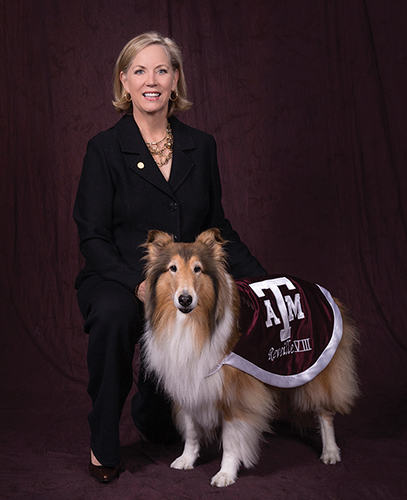
The BIMS program was expanded to the Texas A&M University Higher Education Center at McAllen, with a record number of students. The overall BIMS enrollment is approaching 2,700, maintaining its status as the largest undergraduate degree-granting program on campus. BIMS also boasts strengths in underrepresented minorities and first-generation students. Its undergraduate research program is cited on campus for its rigor and excellence. BIMS graduates make up a large portion of Aggies who matriculate to Texas healthcare professions.
A BIMS Advisory Board was formed and has proven to provide enthusiastic support for BIMS. Scholarships have increased and a BIMS Outstanding Alumnus award was created.
The Veterinary Medical Teaching Hospital (VMTH) created a vision to be the premier veterinary teaching hospital in the world, with a mission of creating a better life through compassion, innovation, and discovery. Praise from clients and referring veterinarians confirms that these efforts are successful. The hospital’s caseload and income continue to climb, which allows the purchase of cutting-edge equipment and other hospital support. This equipment includes advanced technologies, like virtual reality, artificial intelligence, and support for a new telemedicine service. Both senior and new faculty are contributing to a rising level of excellence across many services.
It has been imperative to advance the culture in the VMTH of treating everyone the same, which is to say, royally. At the same time, it is important to know who each client is so that we can acknowledge them as indicated; for example, if a loyal supporter and donor brings in a patient, it is vital that we know enough about them to thank them appropriately. If Board of Regents members are clients, we should acknowledge them for all they are doing for Texas A&M and the CVM. Another cultural component in the VMTH is that people treat others as they are treated, underscoring the importance of treating our clinicians, staff, and students royally as well.
Out of all of your accomplishments as dean, what are those that stand out for you? And why?
It is hard to say, because I claim none as mine alone. With that in mind, I might say that the biggest accomplishment is gathering the team we have. We have the most amazing leadership team I’ve ever seen. The executive committee is comprised of leaders who are absolutely devoted, capable, talented, and who have made this college much better. Each of them has, in turn, assembled teams of excellence in their respective areas. The Dean’s Office staff, under the leadership of Misty Skaggs, is also the best I have ever experienced.
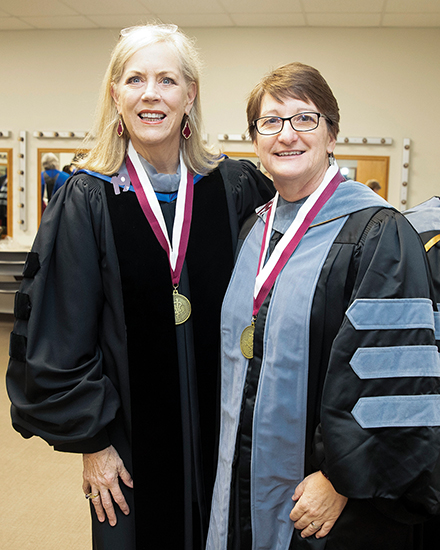
I’m really proud to have been a part of putting these teams together. Every single member of the executive committee and of the dean’s office staff has joined the leadership team within the last 10 years. They, individually, and their recruitment of other talented people have shaped this college through their collective efforts.
Culture starts at the top. I have tried hard to create a culture of excellence, integrity, mutual respect, transparency, engagement, compassion, kindness, and inclusion. We must model these traits and mentor our colleagues. The more we intentionally support and reward excellence, while addressing inadequate performance, the better and more fulfilled the whole team becomes.
We intend to give everyone the encouragement and opportunity to achieve excellence. Most choose excellence, but some do not, and that must be addressed. I have often said that our first choice is for people to be happy here, the second choice is for them to be happy somewhere else, and the last and only unacceptable choice is for them to be unhappy here.
There are really good people and really good jobs, but there are not always really good matches. We truly care about people and want to help them achieve all of their career aspirations in whatever position that might be; in fact, the one most rewarding thing about being dean of this college is being able to help others achieve their goals. When we collectively bring our goals together and I can help advance them in any way, it is enormously rewarding to see those initiatives come to fruition.
Creating and launching the Global One Health Program has been particularly rewarding. Because of efforts like these, the importance of the inextricable link among animal, human, and environmental health is finally being embraced by audiences beyond the veterinary profession. For the first time ever, in 2019, the President’s National Biodefense Strategy contained the elements of One Health. Dr. Gerald Parker and his collaborators have become noted resources in Washington, D.C., Austin, and on campus, especially during the recent COVID-19 pandemic. The partnership with the Bush School and other campus entities has proven successful, including the Annual Global Pandemic Summits. This effort opens unique opportunities for our students and faculty. It also positions Texas A&M and the CVM as valuable trusted resources.
I am especially proud of the Veterinary Emergency Team (VET). In 2009, Dr. Wesley Bissett came to my office to ask for permission to form a VET with the goal of being prepared for the next hurricane. He added that he would do so on his own time. I immediately said yes but that this was a college program and should be developed on college time. He and his team have created the largest, most sophisticated veterinary emergency response team in the nation.
They have formed rich collaborations across the Texas A&M University System (TAMUS), Texas Task Forces, Texas Division of Emergency Management (TDEM), Texas Veterinary Medical Association (TVMA), Texas Animal Health Commission (TAHC), Texas State Guard, private sector veterinary professionals, Texas communities, Banfield, the AVMA, the United States Department of Agriculture (USDA), and other veterinary colleges. I cannot count the number of comments of praise and expressions of gratitude I receive for their good works and also for the involvement of students. We are the only CVM that has “Community Connections” rotations. This is “service above self” like no other. Students learn not only how to respond in emergencies and disasters, but they also gain experience managing teams.
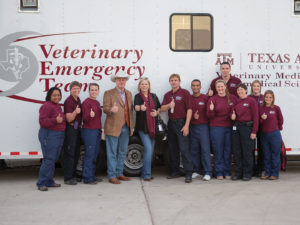
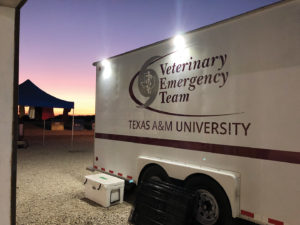
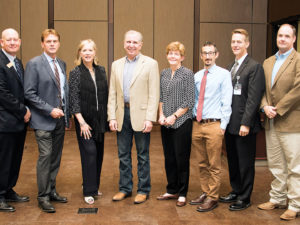
Diversity and inclusion are cornerstone values of the CVM. I feel strongly that people who cross our CVM threshold should immediately feel included, embraced, and accepted. This encompasses all people—whether they are faculty, staff, students, clients, colleagues, constituents, visitors, donors, or anyone else.
I remember asking Dr. Kenita Rogers if she would be willing to serve as the CVM director for diversity and inclusion. She stepped up, as she always does, and the program materialized. As the time demands of this program grew, we discussed the idea that one day we might need a separate diversity officer. Later, when I asked her if she were ready for someone else to step in, she declined emphatically, saying that she wanted to keep diversity, and she did.
I am gratified by all that has been accomplished. We are leaders on campus, within the profession, and across the healthcare professions. We have a Council on Diversity & Professionalism, multiple trainings, wellness initiatives, inclusive facilities, diversity scholarships, Veterinarians for One Inclusive Community for Empowerment (VOICE) Broad Spectrum, and much more. Nearly 200 CVM faculty and staff have completed mediation training. We have competed well for campus funds that reward success annually, and faculty and students have received awards.
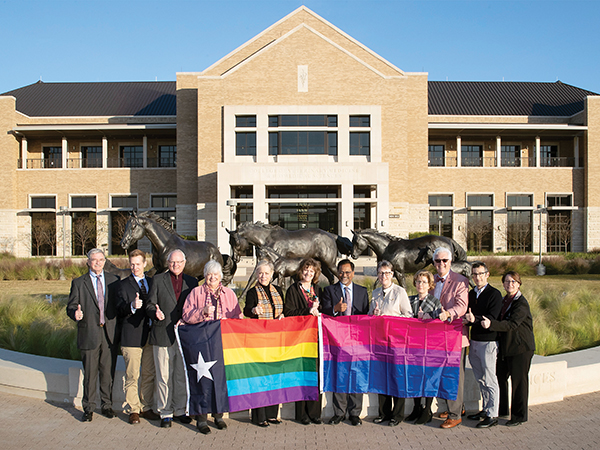
Now, we have received awards at both campus and national levels, including a third consecutive Health Professions Higher Education Excellence in Diversity (HEED) Award from INSIGHT Into Diversity magazine. I am aware that some have questioned these efforts, but make no mistake, diverse teams outperform non-diverse teams, enhancing excellence, ingenuity, workforce development, and even improving financial success.
I am also pleased with the CVM International Program, which encourages and facilitates our faculty and students to be world citizens in a global society. The program, under the leadership of Dr. Linda Logan, offers rich study abroad opportunities, student exchanges, internships, faculty visits and exchanges, international development, and capacity building. The International Program Advisory Committee ensures representation by CVM units in implementing and strengthening programs. Student experiences include summer courses in various countries, semester long experiences, and research programs.
With regard to the changing landscape of veterinary medicine, I have developed a passion for innovation and entrepreneurship. We live in an exponentially changing world, one in which even the rate of change is accelerating. If our profession, our college, and our university are to be successful in the future, we must respond to those changes, and, hopefully, lead in that effort, not just follow.
The CVM also has developed a reputation as a leader in innovation and entrepreneurship. We have done many things to earn that reputation, such as the annual Veterinary Innovation Summit (VIS), the Veterinary Entrepreneurship Academy (VEA), Aggies Invent, and the DVM elective in veterinary entrepreneurship. The VIS, in partnership with the North American Veterinary Community’s (NAVC) Veterinary Innovation Council (VIC), was the first of its kind, attracts leaders in the profession, and has been described by attendees as the best program ever attended.
The VEA has become national in scope, with participation by students from many other veterinary colleges. Aggies Invent is offered in partnership with the Texas A&M College of Engineering and some of our own faculty serve as mentors. Participating students experience firsthand the favorable consequences of working on diverse, multidisciplinary teams and of freely contributing their own ideas, rather than learning what others tell or show them. Students describe this experience as life changing.
Jeremy Kenny, who oversees the CVM Office for Innovation and Entrepreneurship, is a highly valued resource in advancing these programs.
The students are our future. It is our responsibility to prepare them well for the world they will enter and to give them the confidence to make a difference.
The partnerships between the CVM and four TAMUS universities have been described as especially innovative.
It has been satisfying to help create all of them, especially the Veterinary Education, Research, & Outreach program (VERO) on the West Texas A&M University (WT) campus in Canyon. My first visit to the Texas Panhandle in an official capacity as dean occurred only a few weeks after joining Texas A&M in 2009. That is where the partnership was born among the CVM, WT, practicing veterinarians, and livestock industries. That is when the first discussions were held about offering some of the DVM program in the Texas Panhandle.
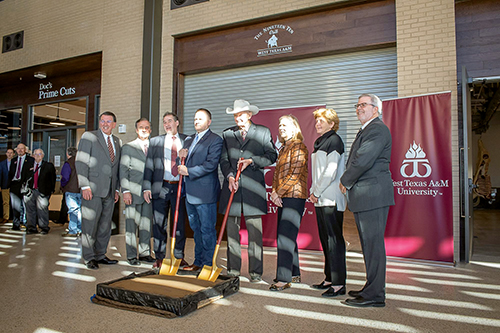
It took a while to knock down all of the barriers, but the partnership is strong and the program is well on its way. WT President Dr. Walter Wendler and his team have proven to be trusted partners. As we were discussing VERO and the proposed 2+2 program with Texas A&M’s president and provost, we underscored the unique nature of this program. How often is it that one has the chance, with a modest investment, to create a program that is the best of its kind, the top in the nation?
However, it’s not just about being No. 1; it’s about contributions. The CVM can help feed the growing world population, ensure the integrity of our food supply, protect and grow the Texas economy, assist the veterinary profession, and encourage our youth. That is entirely within our grasp when one considers mobilizing the resources in College Station and the Texas Panhandle, where over one-third of the nation’s beef is fed. At the 2020 veterinary deans’ meeting, a few deans asked if they could visit this program, as they would like to consider a similar model.
Particularly rewarding has been the improvement to the CVM facilities. Most notable is the $120 million Veterinary and Biomedical Education Complex (VBEC). During planning stages, a group of us visited other veterinary colleges; the University of California, Davis medical college; and Stanford University’s medical school and College of Business. We extracted ideas from all sites, especially from the new College of Business at Stanford.
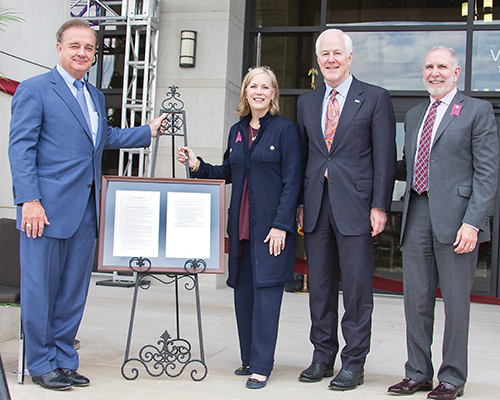
I recall well walking down the street at Stanford with the Stantec architects, including Dan Caren, who ultimately were awarded the contract to design VBEC, when they asked me what we were trying to accomplish. I told them that when people saw VBEC, their immediate response should be that this must be the best veterinary college in the land. This look must include a front door to the CVM, lacking at the time, with the building set back off the road with a tree lined boulevard entrance. The building had to accommodate modern, innovative teaching methods and technologies as far into the future as possible and that included flexible learning spaces for large and small groups. The building had to be modern, yet it had to be Texas classy. It must be warm and inviting such that people wanted to come inside and once inside, they wanted to stay.
The first designers were creative and gifted, but they did not get Texas. After a number of attempts, they were replaced, and the next designers nailed it. Our friends in the College of Architecture had helped us with the program requirements at the beginning and, interestingly, their initial rough design was close to the final design.
I am enormously grateful to Chancellor John Sharp, who supported this project entirely with Permanent University Funds. The $120 million also supported the remodeling project for the Small Animal Hospital. The reception area is really nice, as are all areas remodeled. We desperately need a new Small Animal Hospital.
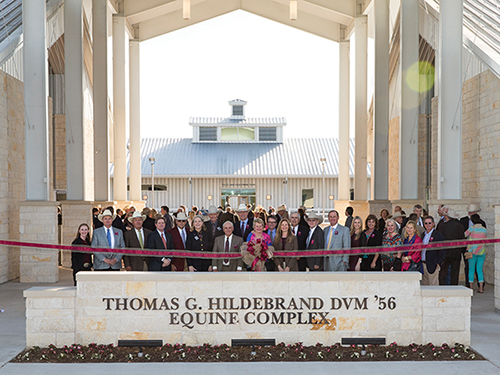
The $33 million Thomas G. Hildebrand, DVM ’56 Equine Complex was also most fulfilling. Large Animal Clinical Sciences (VLCS) executive director Dr. Jim Heird laid out every inch of the facility, including the equestrian team facilities and the cross-country course for Texas A&M Athletics. This facility has become a treasured resource on campus, hosting more than 250 events and attracting more than 30,000 visitors per year. The entire $33 million was from private donations. The grand opening of the Thomas G. Hildebrand, DVM ’56 Equine Complex was held on the same day as the VBEC ground breaking. That was a special day.
There are other facilities projects for which I am appreciative. The Diagnostic Imaging & Cancer Treatment facility is a state-of-the-art facility that has proven to be an enormous asset for the VMTH and the CVM. The Schubot Center for Avian Health is a one-of-a-kind academic center supporting teaching and research. The Multispecies Research Building provides much needed large animal space. The Global Health Research Complex, a collaborative campus space that was previously lacking, will substantively change our research capabilities in infectious disease. The Highway 47 Reproduction Research facility has been expanded, and Veterinary Medical Park has improved tremendously. The equine reproduction lab was expanded, as was the food animal reception area. The Texas A&M Institute for Preclinical Studies (TIPS) is an impressive research facility that is destined to become invaluable in supporting translational research and innovation in its next phase. I regret that I will not be dean for the VERO facility grand opening in Canyon. TAMUS Chancellor John Sharp once again devoted Permanent University Fund (PUF) monies for this special facility.
Likewise, outside of your accomplishments, what has been particularly rewarding about being dean?
I have said many times that the position of Dean at the Texas A&M CVM is the best position I have ever held in the best place I have ever been. Why is that still the case? It is the people. It is particularly rewarding to work with such highly successful, dedicated faculty. The CVM students are smart, devoted, and attract the praise of our own faculty and staff as well as outside constituents. The devoted staff make everything happen, as they are constantly attentive to success and the impression we make. The Texas A&M core values are alive and well at the CVM.
One of the most rewarding accomplishments was raising all of the salaries within the CVM. At the time, faculty salaries were in the lower-half to lower-quartile among veterinary colleges. We were able to raise all of the faculty salaries well above the mean.
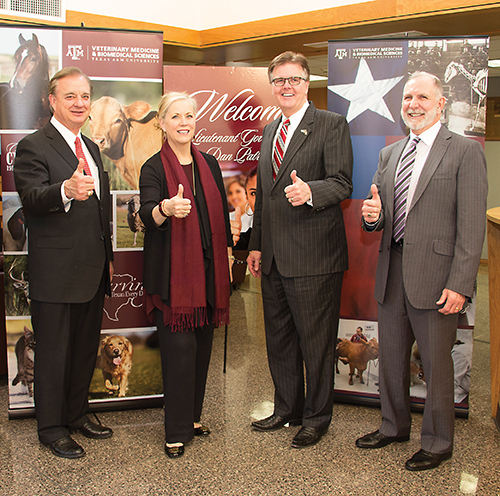
I have also enjoyed working with many people across campus, such as other deans, provosts, vice presidents, presidents, chancellors, and the people who support them. Also included are those in the Texas A&M Foundation, Association of Former Students, and 12th Man Foundation. I have had the privilege of working with three provosts, four presidents, and three chancellors, if interims are counted. It has been a privilege to get to know them, represent the CVM to them, and help whenever needed to advance the greater mission of the university.
I have enjoyed preparing and delivering each and every presentation about the CVM to these groups to make sure they are aware of the excellence of our CVM, how we contribute to the university and system, how we influence the state of Texas, and what it will take to make the CVM even better. It is clear that we all share the goal of advancing Texas A&M.
I have thoroughly enjoyed the development aspects of the position, because development is basically friends-building. Working so closely with the CVM Development Council, the Equine Development Committee, the BIMS Advisory Board, and the Texas A&M Foundation has been a joy. These loyal friends of the college have given or helped raise millions of dollars of support for our people, programs, and facilities. I will forever be indebted to each one of them for their gifts and their love of Texas A&M that rivals ours. You will see the names of many throughout the college, on endowed chairs, in buildings and on scholarships. I have always said that it is gifts from our friends that help us achieve the level of excellence to which we aspire.
With the risk associated with calling out one of them, I share the story of the largest single gift we have received. Jim (Heird) and I had planned a long-awaited vacation, the first since we had been here, to attend a horse show circuit. The day before we were to leave, we received a call from Jeff Hildebrand saying he would like us to come to Houston to meet with him. Of course, we would make that happen. When we arrived he informed us of his intended gift of $25 million for the soon to be designated Thomas G. Hildebrand, DVM ’56 Equine Complex. He took our breath away and we were filled with a mix of emotions, mostly humility and gratitude. The rest, as they say, is history.
Later, Jeff told us how hard it is to give away money. He said that gifts represented desires of the entire family. He said he sought assurance that his wishes would be honored at the time and into the future. Very importantly, he had to have trust in the individual overseeing his gift. I have never forgotten those words, that day in Houston, or that gift.
Betsy Overholser offered a glimpse into the heart and motivation of our donors when she said, “I used to not care about making money, but now I want to make a lot of money so I can give it all to the CVM.” Those words reminded me that they are not our donors, rather we are their cause.
I also have found fulfillment in working with those outside of the CVM. The CVM and the TVMA built a mutually beneficial relationship and I was proud to be able to pay the membership fees for every CVM faculty member for several years. The Veterinary Job & Externship Fair has proven to be a valuable shared event.
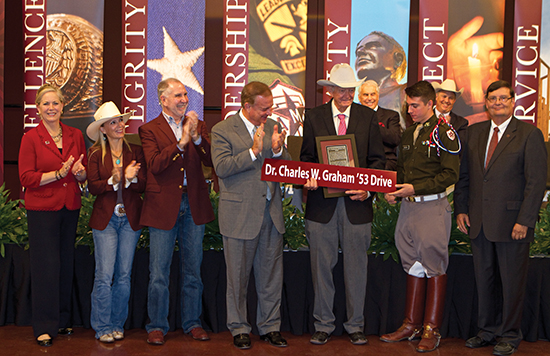
Unfortunately, I did not make it to every local veterinary organization in Texas, but I did visit every one that extended an invitation. There are too many industry groups to name, but included are the Houston Livestock Show & Rodeo (HLSR), San Antonio Stock Show & Rodeo (SALE), Fort Worth Stock Show & Rodeo, and Rodeo Austin. There is nothing like Aggie night at the HLSR; these organizations donate millions of dollars every year to student scholarships across Texas and our students are beneficiaries. The Texas Cattle Feeders Association (TCFA) also has been exceptionally supportive of the CVM.
It has been a pleasure to work with all of the Texas livestock groups and to visit most of the historic ranches in Texas. I call out the 6666 and the Burnett Estates, LLC, because of their support for the CVM in gifts and educational opportunities for our students. The head of their equine division is Dr. Glenn Blodgett, one of our DVM graduates and a CVM Outstanding Alumnus. Another notable supporter is the historic King Ranch, including Helen Groves and James Clement. I have also had the opportunity to advocate for the CVM in the Texas Legislature and in D.C. Dr. Charles Graham has been a special friend of the college, giving his time, resources, and connections. He has advocated for the CVM constantly, making impacts behind the scenes that few realize.
How did your past roles in academia and as an equine veterinarian influence your time as dean?
In each of our lives, our collection of experiences makes us who we are and gives us the tools to contribute. My professional career in veterinary medicine started as a mixed animal practitioner and practice owner in a small rural community in Northeast Mississippi. I have both heartwarming and humorous tales to share.
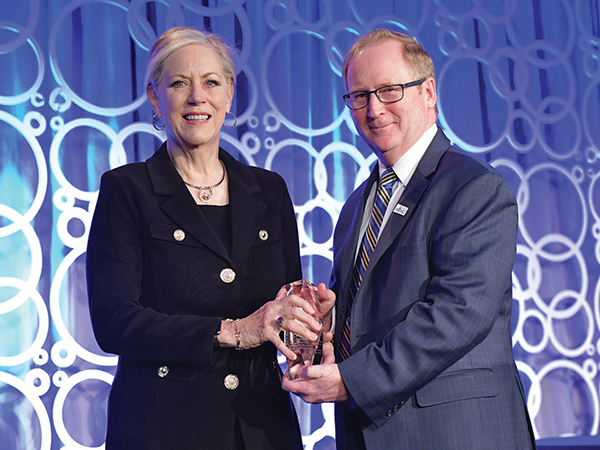
Having the perspective of a practicing veterinarian was foundational as I entered the academic setting. The opportunity to enter academia to build a new college of veterinary medicine from the ground up was life changing. We dived deeply into every aspect of a veterinary college, from obtaining approval and financial support from the legislature to planning the entire curriculum, which included developing a syllabus for every course, with learning objectives for every lecture. We designed and constructed a modern facility that was way ahead of its time. We created admissions procedures, developed position descriptions, and recruited faculty and staff.
I taught in all four years of the curriculum, sometimes lecturing six hours a day to several different classes, some of which were anatomy, physiology, normal and abnormal systems, various clinical skills laboratories, and even behavior. We launched a clinical service and built a loyal caseload and referral service. During this time, I was approved for an alternative residency training program by the American College of Veterinary Internal Medicine (ACVIM) and sought board certification with both the ACVIM and American Board of Veterinary Practitioners (ABVP).
At the University of Missouri, I finally was able to pursue research. I collaborated with Dr. Harold Garner and his team with a primary focus on endotoxemia and laminitis. When the opportunity presented itself to enter an administrative role, I was conflicted; however, I accepted the challenge with the goal of making a broader impact. I was a department head/chair and hospital director/chief of staff for a total of 19 years at two different universities.
It was always important to remain connected to the livestock industries, the horse industry, and to be involved in organized veterinary medicine. Most importantly, I’m an animal owner with a strong devotion to animal health and well-being. All of these experiences have afforded me a unique perspective as dean.
What has been the hardest part of your job (either professionally or personally)?
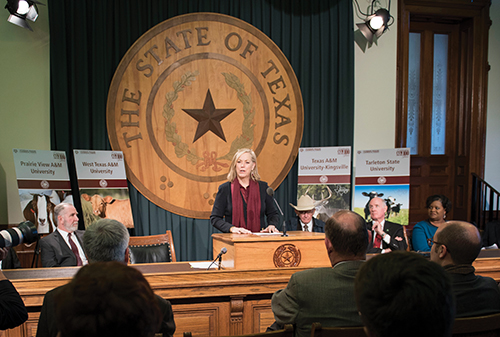
Once, someone asked me what I worry about every day. I try not to be a worrier; however, what I think about is the opportunity buffet. How do we make sure that we do not miss opportunities we will later regret passing up, yet how do we avoid taking on so much that we are not good at anything? And how much do we take on without creating undue burdens for others?
It is difficult not being able to accomplish all one wants to accomplish, especially when the value and significance are clear. Resources are certainly related and are also limited. It is hard to observe what faculty and students need for their programs and not be able to “write a check” every time. An enjoyable challenge is identifying and seeking different, perhaps creative, sources of funding for various needs.
A challenge in every administrative role is confidentiality. The administrator is often privy to personnel issues and to both sides of controversial issues; however, strict confidentiality must be maintained. It is especially difficult to hear the perceptions and, often, misperceptions about these issues knowing the facts and not being able to share them. Administrators often receive misplaced blame as well. That is just part of leadership roles.
Is there anything you might consider the highlight of your time as dean?
There are so many highlights they cannot be counted. I will certainly never forget the day the chancellor agreed to provide $120 million for VBEC or the day Jeff Hildebrand offered his $25 million gift. Then we had the groundbreaking for the Veterinary & Biomedical Education Complex on the same day that we had the grand opening of the Thomas G. Hildebrand, DVM ’56 Equine Complex.
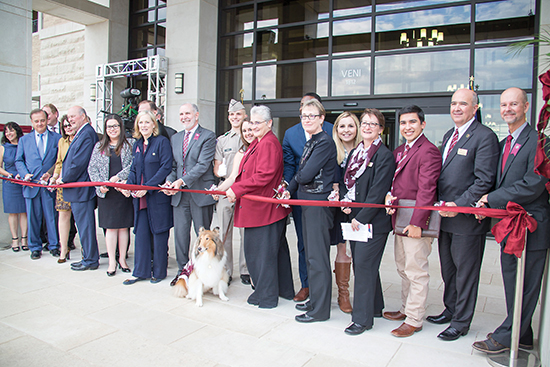
Imagine major events for two notable facilities, each on the cutting edge, on the same day. That was a $150 million day. Later, the VBEC grand opening attracted the largest attendance of any grand opening in the history of Texas A&M, including national and state legislators. Of course, all of the ground breakings and grand openings were highlights.
The creation of the CET was the culmination of a long-standing aspiration. We are leaders in veterinary education, and the CET supports our faculty and helps them build on their great talents as educators. Few veterinary colleges have such a valuable resource.
I am really proud of how we’ve expanded communications in this college. We have made substantial progress in distributing our stories far and wide to help people in all walks of life understand who we are and how we contribute. Our photographers do more than take photos; they capture our essence and record our history. Our graphic artists are so creative they continue to earn accolades and awards.
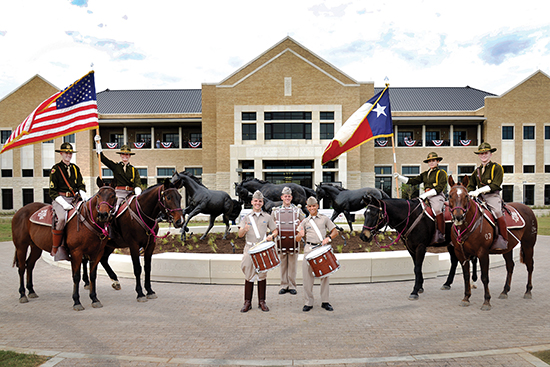
Many outside of the CVM believe we outsource to a professional company; they are surprised and impressed when I tell them it is all done in-house because of the enormous talent we have. When we write stories in a CVM Today, people tell me that while they usually throw away most of these types of publications upon arrival, they keep ours, using them as coffee table books because of the quality of publication and content. Those things make me proud.
Another memorable moment was learning about the Texas Monthly survey that asked Texans, “When you think of Texas A&M, what do you think of?” They said the veterinary school No. 1 and football No. 2. Now there’s a moment.
Subsequently, I got a call from the Houston Chronicle’s chief editor, who said, “We have a retreat every year for our executive team at points of particular interest in Texas. May we have our editorial staff retreat at the College of Veterinary Medicine & Biomedical Sciences?” I replied, “Of course you may.” He said, “We want to come there because we know that the CVM is iconic in Texas and it’s one of the places that we would like to highlight.” That really does make me proud.
What were some of the “lighter moments” you’ve particularly enjoyed during your time here?
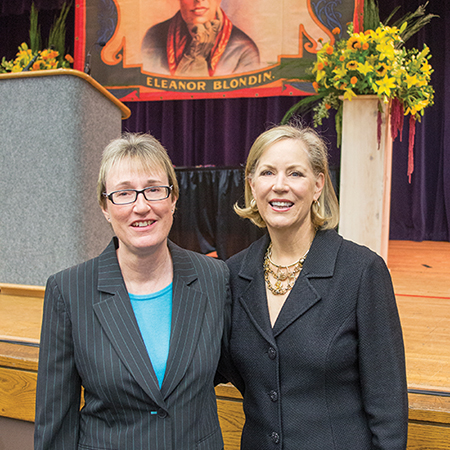
There are actually many lighter moments that go along with being dean. In my case, they started even before I arrived. During my on-campus interview, Dr. Kenita Rogers, then associate dean for professional programs, had been assigned to pick me up at the airport. Much to our dismay, my bags did not show up, leaving only one slightly used outfit for my entire interview. Dr. Rogers took me shopping at Target, where I procured a Texas A&M T-shirt and a pair of exercise pants. They served as pajamas and lounge wear, while I washed my only outfit in the hotel room sink. I still have that “Target outfit” and smile whenever I wear it.
Before I moved to Texas, a diehard Aggie and big Texas A&M supporter, Frank Mueller, called to ask if I had made living accommodations—I had not—and temporarily offered one of his patio homes in Chimney Hill. Over the phone, he gave me an address and a phone number with instructions to call Jerome as I was pulling into town. I found out later that Jerome was Jerome Rektorik, one of Frank’s classmates and the development officer at the Bush School.
He greeted me that night along with the entire theriogenology section, all of whom helped me unload my horse trailer. A few weeks later, Frank called to say I had to move before graduation because his family would be coming to stay. Soon afterwards, he called again to relay that I did not have to leave permanently; rather, I should move out just while his family was in town.
He gave me a new set of instructions to go to another address south of Navasota, where I would meet Dr. Nora Janjan. Carrying my suitcase and Cohen, I rang the doorbell of this perfect stranger to inform her I would be staying with her for a few days. She and her husband, Jack, were perfect hosts and even held a dinner party for “friends of the college.” Aggie hospitality is alive and well.
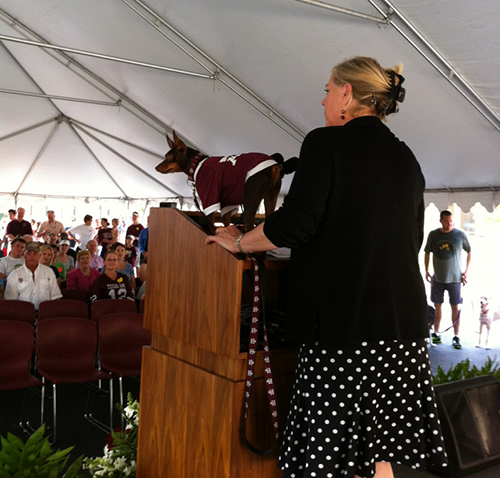
Another lighthearted moment was on the day of the grand opening of the Diagnostic Imaging and Cancer Treatment Center (DICTC). I had brought Cohen for the 5K walk/run fundraiser, Paws to the Pavement, that preceded the ceremonies and realized that I had not thought the day through well with Cohen, as I had no place to put him during the stage ceremonies. He was well behaved, so I decided to take him on stage with me, along with the invited dignitaries. That seemed reasonable as I watched others address the crowd, until I realized that I had to have a plan for him when I was speaking—I couldn’t just tie him to my chair or ask a Board of Regents member or the Texas A&M president to hold him for me. In a flash, I decided to take him to the podium with me. I placed him on the podium facing the crowd, where he stood like a statue attentively scanning the attendees during my entire presentation. Regent Jim Schwertner was so amused that he took a photo of Cohen on the podium. There are few times I have seen Regent Schwertner since that he has not mentioned Cohen on the podium that day, and he has sent me the photo periodically since. In the end, we are veterinarians and we love our animals. It is fitting for them to be a part of our lives and even our special events.
Dr. Kenita Rogers and I began to develop a very close relationship from day one. She has a remarkable sense of humor, and I love humor, so we both enjoy bantering. One particular day when we were deep into our humorous exchanges in a public forum, one of the faculty members asked someone else if we liked each other. The answer was a resounding yes.
William Arthur Ward sums it up by stating, “A well-developed sense of humor is the pole that adds balance to your steps as you walk the tightrope of life.” We all deal with daily pressures and I have always found humor stabilizing. The CVM is balanced by its executive committee that gets along very well, works hard, and laughs harder. It is a joy to work with a group of dedicated professionals who weave humor into their conversations. Erma Bombeck took it a step farther when she said, “Where humor goes, there goes civilization.” Our CVM is healthy.
As dean, you’ve continued to be active in the veterinary community. What motivated you to stay involved?
A university is never an island and certainly never should be. It’s extremely important that we have vital connections across our campus and beyond our walls. That’s one goal that I have worked very hard on—building and maintaining relationships. I encourage others to do the same.
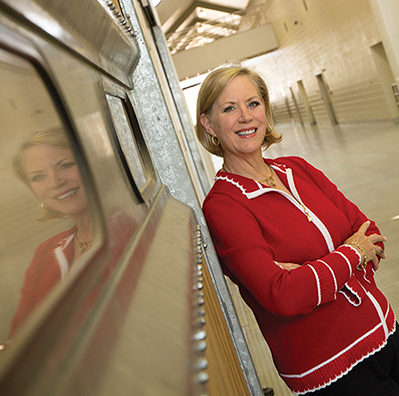
What do you look forward to in your next endeavor?
One thing I do not look forward to is leaving the Texas A&M College of Veterinary Medicine & Biomedical Sciences. That is going to be a very sad day for me. I truly have loved every minute of every day here.
What I will look forward to is utilizing all of my experiences to focus on areas of particular interest in veterinary medicine.
A few buckets include innovation and entrepreneurship affecting veterinary health care and education, leadership, executive coaching, and animal welfare. I have already been asked to serve on boards of one startup and one large international company.
It will be fulfilling to work on issues of significance to the profession with Mark Cushing, founder and CEO of Animal Policy Group. I hope all will remember that I will help Texas A&M and the CVM whenever desired and I will be a phone call away.
Riding my horses, being on the ranch in Millsap, and spending more time with children and grandchildren are certainly draws to this new chapter.
What will you miss most about the students, faculty, and staff?
I will miss the people the most. The CVM is family. We have been through good times and challenges together.
What do you hope people will remember about your time as dean?
Just that I cared and worked hard for the benefit of others, the CVM, Texas A&M, and Texas.
What advice would you offer the next dean?
The main advice I would give is to love the CVM and trust and appreciate its people as much as I have. The college is well-positioned for ongoing success. The CVM executive committee can be counted on under any conditions. I would urge the new dean to be a steward of vital connections, both internal and external relationships.
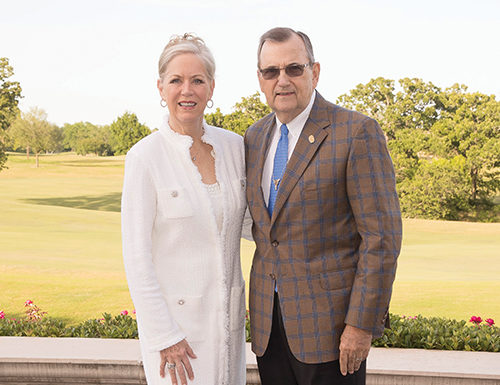
How do you hope the CVM will build upon your legacy?
I hope the CVM will continue its constant attention to excellence and leadership in veterinary education. The students are our future; they’re why we’re here. We have to make sure that we do what’s right for them, that we give them all of the tools they need for a very successful career.
We need to constantly build on research efforts, from basic discovery to commercialization. Translational medicine must be leveraged. Value all research impacts. Build on those successes to-date and continue to be leaders in the research arena.
Define and build the VMTH of the future to support veterinary healthcare that is connected; integrated; continuous, rather than intermittent; proactive, rather than reactive; precise, rather than imprecise; and personalized, rather than generalized. These include business models, technologies, artificial intelligence, robotics, virtual reality, and even digital humans. But as the latest technologies are incorporated, carefully preserve the personal touch with the compassion.
Is there anything else you would want to add?
I have really enjoyed the bragging rights that come with being dean. It is hard to imagine how fulfilling and inspiring it is to talk about how great this college is and how great its people are.
One of the things I’ll remember most about our college is the way it comes together around those in need, whether it’s a student, a staff member, a faculty member, or friend beyond the CVM. Certainly, we’ve had some sorrows and some losses along the way, and in each and every case, this college has come together around those in need.
In the end, I can look back and say I’ve never worked as hard, I’ve never had as much fun working so hard, and I’ve never laughed as hard as I have here. I will miss you all.
Thanks for the memories.
###
Note: This story originally appeared in the Spring 2020 edition of CVM Today.
For more information about the Texas A&M College of Veterinary Medicine & Biomedical Sciences, please visit our website at vetmed.tamu.edu or join us on Facebook, Instagram, and Twitter.
Contact Information: Jennifer Gauntt, Director of Communications, Texas A&M College of Veterinary Medicine & Biomedical Sciences; jgauntt@cvm.tamu.edu; 979-862-4216


